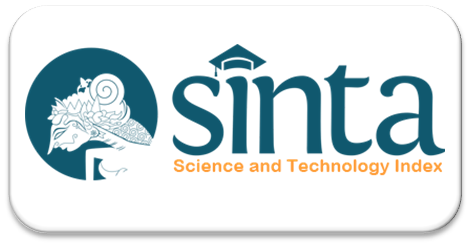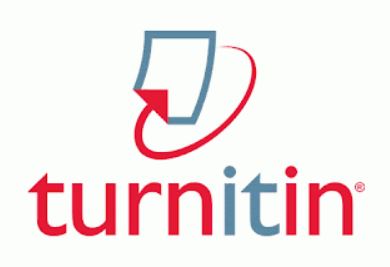Overview of Medication Use in Outpatient Patients at Simpang Tiga Pekanbaru Health Center Based on the World Health Organization's Prescribing Indicators.
DOI:
https://doi.org/10.35960/vm.v16i4.1228Keywords:
WHO Prescribing Indicators, Rational Use Of Drugs, PuskesmasAbstract
The use of drugs prescribed by doctors is very important in providing health services for patient treatment therapy. According to reports received by the World Health Organization (WHO) irrational drug use continues to occur. This is evidenced by more than 50% of drug use being inappropriate when prescribing, while the remaining 50% is caused by inappropriate drug use. This research is a descriptive observational study with retrospective data collection techniques. The sampling method used purposive sampling with the study population all outpatient prescriptions for December 2022 and 320 prescription sheets used as samples according to the inclusion criteria. The results showed that the average number of drug items per prescription sheet was 3.06, the percentage of prescriptions for generic drugs was 98.57%, the percentage of prescriptions for antibiotic drugs was 25%, the percentage of prescriptions for injection preparations was 0%, and the percentage of prescriptions according to the National Formulary was 89.49%. It is hoped that this research can be used as an illustration and information in controlling rational drug use.
References
Hendrawan, M. V. P. (2020). Gambaran Pola Peresepan Obat Berdasarkan Indikator Peresepan World Health Organization (WHO) di Puskesmas Mekar Baru Tanjung Pinang. Skripsi. Yogyakarta: Fakultas Matematika dan Ilmu Pengetahuan Alam Universitas Islam Indonesia.
Herdaningsih, S., Muhtadi, A., Lestari, K., & Annisa, N. (2016). Potensi Interaksi Obat-obat pada Resep Polifarmasi: Studi Retrospektif pada Salah Satu Apotek di Kota Bandung. Indonesian Journal of Clinical Pharmacy, 5(4), 288–292.
Ihsan, S., Sabarudin, Leorita, M., Syukriadi, A. S. Z., & Ibrahim, M. H. (2017). Evaluasi Rasionalitas Penggunaan Obat Ditinjau dari Indikator Peresepan Menurut World Health Organization (WHO) di Seluruh Puskesmas Kota Kendari Tahun 2016. Jurnal Medula, 5(1), 402–409.
Kemenkes RI. (2010). Peraturan Menteri Kesehatan Republik Indonesia Tentang Kewajiban Menggunakan Obat Generik di Fasilitas Pelayanan Kesehatan Pemerintah. Jakarta: Kementerian Kesehatan Republik Indonesia.
Kemenkes RI. (2011). Modul Penggunaan Obat Rasional. Jakarta: Kementerian Kesehatan Republik Indonesia.
Kemenkes RI. (2013). Pedoman Umum Penggunaan Antibiotik. Jakarta: Kementerian Kesehatan Republik Indonesia.
Kemenkes RI. (2019). Peraturan Menteri Kesehatan Republik Indonesia Nomor 31 Tahun 2019 Tentang Sistem Informasi Puskesmas. Jakarta: Kementerian Kesehatan Republik Indonesia.
Nasif, H., Yuned, M., & Muchtar, H. (2013). Kajian Penggunaan Obat Intravena di SMF Penyakit Dalam RSUD Dr. Achmad Mochtar Bukittinngi. Jurnal Sains dan Teknologi Farmasi, 18(1), 17–27.
Ridwan. (2014). Dasar-dasar Statistika. Bandung: Alfabeta.
Rusdiana, E. (2019). Rasionalitas Penggunaan Obat Ditinjau dari Indikator Peresepan Menurut World Health Organization (WHO) di Puskesmas Sako Palembang. Karya Tulis Ilmiah. Palembang: Politektik Kesehatan palembang Jurusan Farmasi.
Saibaka, M. D., Lolo, W. A., & Mansauda, K. L. R. (2022). Evaluasi Peresepan Obat Berdasarkan Indikator World Health Organization (WHO) di Puskesmas Teling Atas. Pharmacon, 11(4), 1685–1693.
Stiawati, T. A. S. T. A. (2020). Analisis Penggunaan Obat Rasional di Tinjau dari Indikator Peresepan di Puskesmas Kota Palembang tahun 2019. Tesis. Palembang: Sekolah Tinggi Ilmu Kesehatan Bina Husada
Syarifuddin, S. (2017). Evaluasi Rasionalitas Penggunaan Obat Ditinjau Dari Indikator Peresepan Menurut World Health Organization (WHO) di Puskesmas Parsoburan Kota Pematangsiantar Pada Tahun 2017. Tunas-Tunas Riset Kesehatan, 7(12), 48–54.
WHO. (1993). How To Investigate Drug Use In Health Facilites (Selected Drug Use Indicators). Geneva: World Health Organization.
WHO. (2002). Promoting Rational Use of Medicines: Core Components. Geneva: World Health Organization.
Downloads
Published
How to Cite
Issue
Section
License
Copyright (c) 2023 Novia Sinata, Hazizah Hazizah

This work is licensed under a Creative Commons Attribution 4.0 International License.
Submitted paper will be firstly reviewed by the editors to determine whether the paper meet the edition theme and submission guidelines. Papers which meet the theme and the guidelines will be assigned to selected reviewers for peer-reviews. Viva Medika: Jurnal Kesehatan, Kebidanan dan Keperawatan is a double blind peer-reviewed journal which involves reviewers based on their experties relevant to the topic of the paper. Final decision of paper acceptance is solely decided by the editors according to reviewers' comment.
Plagiarism and self-plagiarism are prohibited. Viva Medika: Jurnal Kesehatan, Kebidanan dan Keperawatan uses PlagiarismCheckerX and iThenticate to scan papers for detecting plagiarism. Thus, Appropriate citation and quotation should be used

.png)








